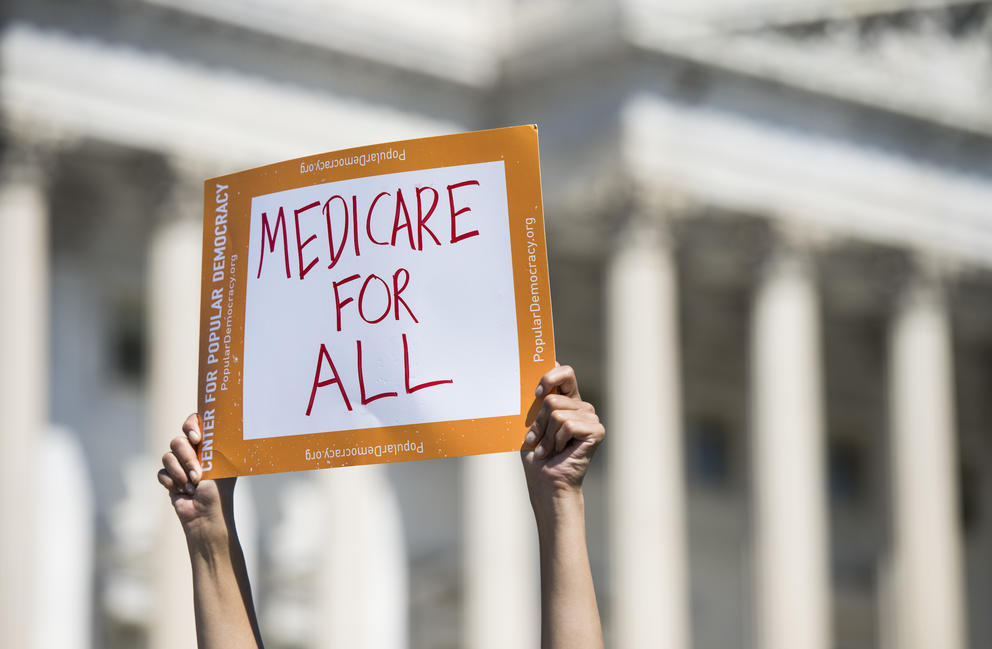Both bills purport to provide everyone in the country with affordable health care on demand. With no chance of a hearing in the Senate, and a guaranteed veto from the current president, neither has a chance of passing. The president says he has a “spectacular” health-care plan, which we all know won’t make it through the Democratic Party-led House of Representatives.
While they’re pretending to do something, it might be useful for the rest of us to actually identify the qualities we want in a health-care system. Using the country’s vision statement, the preamble to the Constitution, as our guide, what would it take to create a plan that would ensure “a more perfect Union, establish Justice, insure domestic Tranquility, provide for the common defence, promote the general Welfare, and secure the Blessings of Liberty to ourselves and our Posterity”?
We must begin with clear definitions. Are we a loose collection of individuals bound by our existence within artificially drawn lines in the dirt, or citizens committed to the vision decreed in the preamble? Are we committed to individual success or the general welfare? Do we secure Blessings of Liberty for ourselves or extend them for generations to come? The answers to these questions must form the basis of our national strategic plan — the foundation of all national policy.
If we are simply a collection of individuals, content to have some relegated to failure so others can succeed, our health-care system would be built on a win-lose model. Health-related companies would assure high dividends for stockholders or owners. Because stock values are based on profit, steadily increasing high prices for insurance premiums, medication and medical services would be required to meet those quarterly and annual goals. To ensure profits for themselves, employers would deduct an increasingly larger portion of employees’ salaries to cover health-care costs. Individuals with the highest medical need would pay the largest percentage of their salaries to health insurance until many would opt out of the system altogether. Individuals not receiving insurance through their employers would be forced to shop for the best plan they can afford, which may not meet their actual health-care needs. To use examples from the current social media cycle: Felicity Huffman’s profligate daughter would have complete access to any health care she needs, while the young, homeless chess champion would have only what charity can provide.
If we are citizens committed to the general welfare, an all-inclusive vision of health care, the driving question would be, “How do we provide excellent medical care for all of our citizens?” We would remove the specter of shareholder/owner value from the system. No basic health-related company would be publicly traded. No one would become rich because people are sick. Hospitals, pharmaceutical companies, medical facilities would be run for the benefit of all. They would revert to their original functions as nonprofit charities or government-run services. There would be one insurer, the federal government, accountable to the people via our elected officials. Felicity Huffman’s daughter and the homeless chess champion would both have their medical needs tended superbly without fear of financial ruin.
The former description, of insurance-based health care, sounds like the mess we have now. Even Medicare has moved away from enabling participants to receive medical care regardless of financial circumstances toward a system based on participants’ ability to purchase less restrictive, narrowly defined, increasingly deluxe plans.
Transitioning to an affordable health-care system built to support health rather than the financial success of insurance companies would require drastic steps. There would be hidden start-up costs. For example, what would we do with the 500,000-plus people currently employed by the health insurance industry, many of them 50 years old or older, a group difficult to re-employ. How would the income suddenly lost by thousands of low-wage workers like clerical or janitorial staff impact their communities: the housing markets, local taxes, small businesses? Would they be foisted on their working children to provide and pay for their care? What would we do to ensure they have stable futures? We could allow displaced employees over age 50 to claim full Social Security benefits or draw from their retirement plans without penalty, depending on their financial circumstances. We could offer low-income workers free retraining at state and community colleges. There probably are many other possibilities, but no one seems to be discussing them in the current proposals.
Another concern centers on the four federal systems that currently manage health care: Medicare, Medicaid, the Veterans Administration (VA), and the Indian Health Service (IHS). Medicare was effective for seniors until it began to outsource its work through private insurance companies that require a profit. Since then, costs to seniors have risen while the services have been divided into basic, elite, and super elite plans, feeding the existing racial and class disparities in health-care delivery. Medicaid is federally funded, but run by each state, and subject to the accountability systems within states, with mixed success.
The VA and IHS exist in a constant state of chaos and scandal related to lack of oversight and accountability, abuse of resources, and mismanagement.
An effective, government-run health-care system must include:
- Accountability structures that don’t replicate the dysfunction of the VA and IHS.
- Leadership of the new system not subject to political transition and pressure from every new administration.
- A formal plan for institutional relationships with existing health-related agencies like the National Institutes of Health..
Ultimately we come back to the question of our vision for the future. Are we working toward a more perfect union steeped in the vision of a democracy that treats us all equally, or do we revert to the plutocracy eschewed by our founders? Do we reimagine broken systems until they support us all, or let them continue to break until we are irreparably fractured?
These are some of the sticky issues about transitioning from one health-care system to another that neither pro nor con arguments address and no one asks about. What about you? How would you answer them? What other information would you need to decide which plan, if any, to support?



